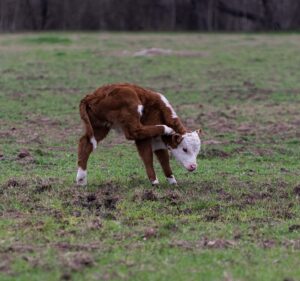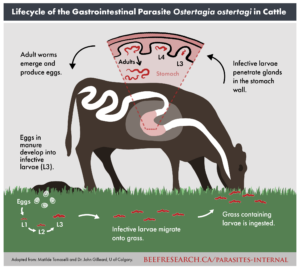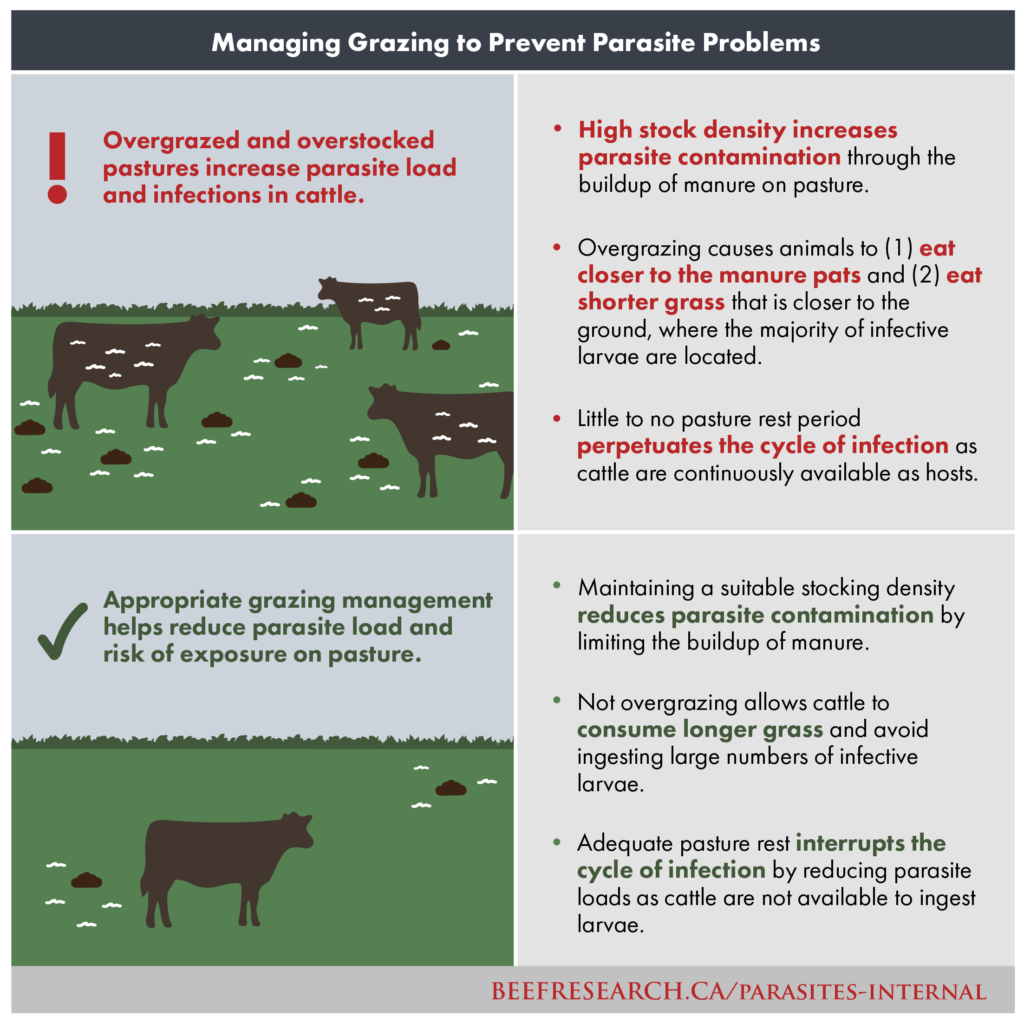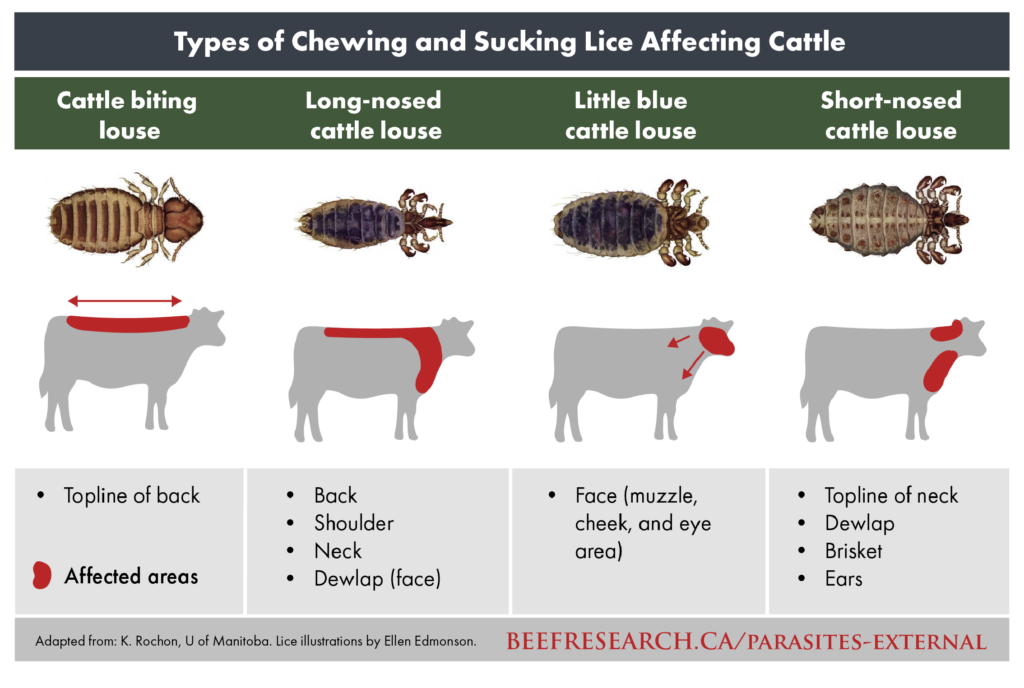Where there are cattle, there are parasites: Nine tips for managing parasites in your herd 🎙️
CLICK THE PLAY BUTTON TO LISTEN TO THIS POST:
Listen to more episodes on BeefResearch.ca, Spotify, Apple Podcasts, Amazon Music or Podbean.
Are your cattle itchy and scratchy? Have you noticed reduced feed intake or altered grazing behaviour? These may be signs of a parasite problem in your herd.

Effective parasite management is a balancing act. On one hand, controlling parasites is essential for maintaining cattle health, welfare and productivity. While on the other hand, over-use of some treatment methods can lead to parasite resistance, which negatively impacts the long-term health of the herd and can also affect the environment.
The type of parasites present and the magnitude of the problem will vary based on different factors such as animal health, geography, season and management scenarios. Therefore, it is important to take a multifaceted approach when combating parasites.
Here are nine tips to help manage parasites on your farm:
Tip #1: Meet animal nutritional requirements and maintain cattle in good body condition.
Healthy cattle are less susceptible to the impacts of both internal and external parasites. When cattle are thin or have nutritional deficiencies, their ability to cope with parasites is reduced. Routine feed testing should be implemented to ensure rations are properly balanced and to correct any nutritional deficiencies that may be present.
Tip #2: Implement biosecurity protocols on your farm focused on parasite prevention and control.
New cattle introduced onto your farm can be a source of external and internal parasites that can contaminate your cattle and pastures. Have a proactive biosecurity plan in place, which may mean quarantining new entrants. Isolate and inspect new animals for lice or other parasites, and treat them 10 to 14 days prior to allowing them to join the rest of the cattle to prevent infesting the main herd. When treating, use a combination of control products from two different dewormer classes, such as Ivermectin plus fenbendazole, to minimize the risk of bringing resistant parasites into your farm. Consult your veterinarian to discuss your parasite biosecurity program.
Tip #3: Ensure pastures are rested between grazing periods to help reduce parasite load.
Infective larvae cannot survive for a long time after hatching without being ingested by a host animal so providing a pasture rest period helps to break that cycle. The length of rest periods for pastures will vary depending on factors such as forage species, level of utilization and environmental conditions.
Tip #4: Monitor parasite burdens by conducting fecal egg counts on your herd.
This will allow assessment of internal parasite loads and determine which parasites you need to target. Consult your veterinarian on the most appropriate sampling strategy to use. The results from fecal egg counts must be interpreted in the context of your grazing management, production practices and parasite control regimes.
Correctly identifying the pest that is causing production problems is an important first step to proper management and prevention strategies.
Tip #5: Avoid overstocking and overgrazing.
Parasites are more likely to spread when cattle are in close proximity to one another. For example, lice are mainly spread through animal-to-animal contact, and the more crowded animals are, the greater the risk of spread. Ensure adequate stocking density in all locations where cattle are kept.
Overstocked pastures lead to increased contamination with parasite larvae through the buildup of manure. Similarly, when pastures become overgrazed, the cattle ingest a greater amount of parasite larvae due to grazing closer to the fecal pats and closer to the ground where the number of larvae is the highest.
Tip #6: Consider rotational grazing strategies.
Whenever possible, avoid grazing the same pastures in the fall of one year and the spring of the next. Infective parasite larvae from eggs deposited in manure in the fall may survive the winter and be a source of contamination for cows and calves grazing these pastures in the spring. If rotational grazing is being utilized, consider grazing younger animals first followed by older cows. This will allow the younger, more susceptible animals to graze the cleanest pastures.
Tip #7: Avoid harrowing pastures until the weather is hot and dry.
Harrowing pastures breaks up manure pats and exposes infective larvae and eggs to the elements. When the weather is hot and dry, this can be an effective method of reducing parasite populations. However, harrowing under other conditions will increase the potential exposure of cattle to infective larvae that are scattered from fecal pats across the area.
Tip #8: Cull chronic parasite carriers.
Some cattle (about one to two percent) can be chronic carriers of external parasites, such as lice. These cattle perform poorly and act as a source of reinfection for other animals. Even after treatment, these cattle will remain infected and should be removed from the herd.
Tip #9: Use chemical treatments effectively and responsibly.
There is an assortment of products available on the market developed to control specific parasites through a specific mode of action for a specified length of time. Work with your veterinarian to develop a strategic control program that balances best practices with the practical realities of herd management, and use the five C’s of parasite control:
- Use the correct product.
- Apply to the correct class of animal.
- Apply at the correct time.
- Use the correct dose.
- Check for efficacy.
It is natural for cattle to have parasites, and you will never be able to eliminate them 100% from your herd. However, implementing simple and effective strategies can help to keep parasite populations low.
Sharing or reprinting BCRC posts is welcome and encouraged. Please credit the Beef Cattle Research Council, provide the website address, www.BeefResearch.ca, and let us know you have chosen to share the article by emailing us at info@beefresearch.ca.
Your questions, comments and suggestions are welcome. Contact us directly or spark a public discussion by posting your thoughts below.



